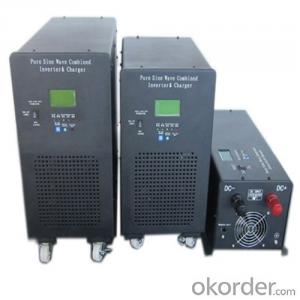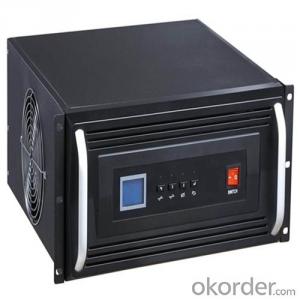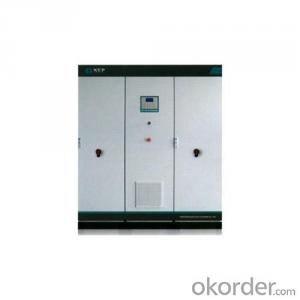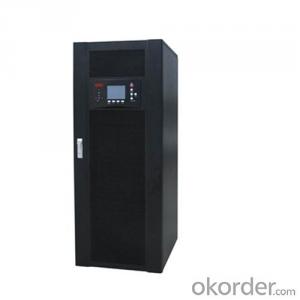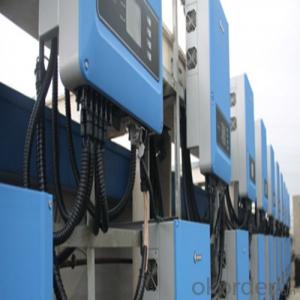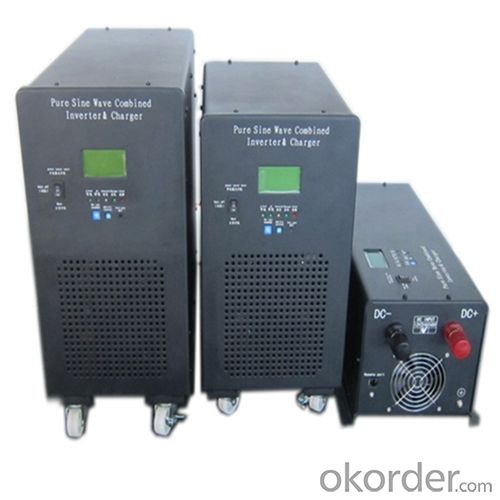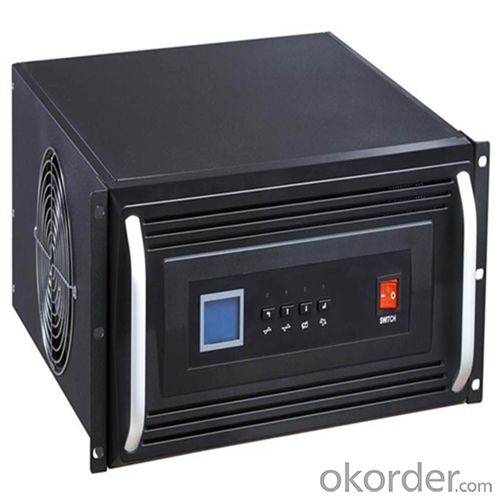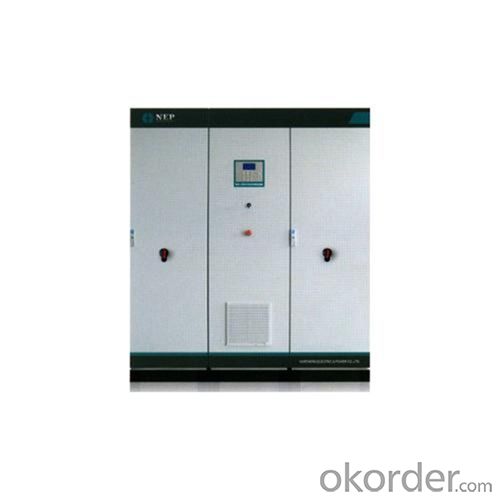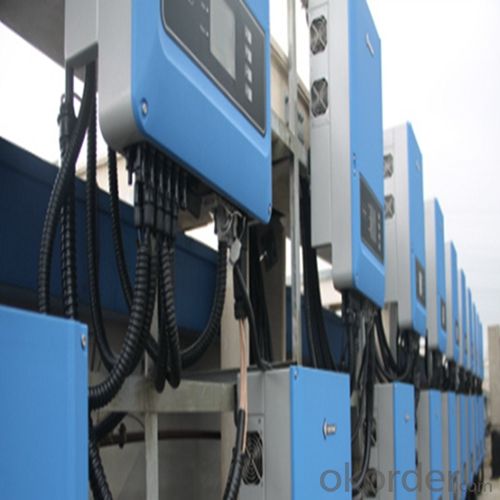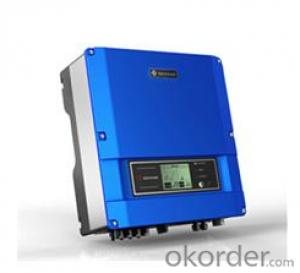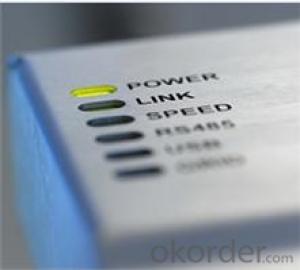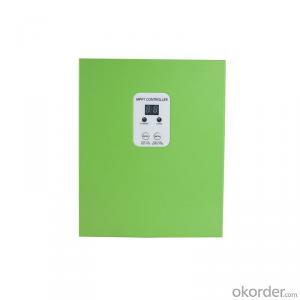Solar Inverter Brisbane - Approved MPPT Solar Charger 3000W 24V
- Loading Port:
- Shanghai
- Payment Terms:
- TT OR LC
- Min Order Qty:
- 5 pc
- Supply Capability:
- 3000 pc/month
OKorder Service Pledge
OKorder Financial Service
You Might Also Like
Performance Characteristics
· 1. Suitable for all electrical equipments
· 2. Large LCD display for more detailed content
· 3. CPU controlled; fast transfer time
· 4. Intelligent battery management, prolonging the service life of the battery
· 5. Complete protection function, high reliability
· 6. Can provide high current charge
· 7. Can match different types of batteries
· 8. Disassembled LCD box which can make the operation in a distance of 15 meters
Product introduction
EP series is sine wave low frequency inverter, which is specifically designed for home appliances. It is equipped with a big LCD screen so all information is displayed in detail, which makes it more convenient to use. Charging current of the inverter is adjustable from 5A to 45A and you can also select different charging voltage to charge different types of batteries so batteries are under great protection.
Our Service
Samples
Samples are Available for Testing and Market Test.
Warranty
We provides warranty against defects in materials and workmanship for its Uninterruptible power supply, Power inverter/chargers including inverter12v 24v 48V, Solar charge controllers (“Product”).
OEM Service
OEM service is strictly based on the ISO9001 ISO14001 quality assurance system. The TOP involves the effective teamwork of departments from Sales, R&D, and Engineering, purchasing, production & QA, assuring a high quality product and prompt delivery for customers. The standardization of our quality system and the quality stability has earned us the trust of our customers for 12 years.
We have 10 sets of automatic insertion equipments, ICT PCB testing equipments, ATE automatic testing center and aging workshop for all products. Monthly output of UPS series exceeds 200,000. We have been offering OEM service for over 12 years.
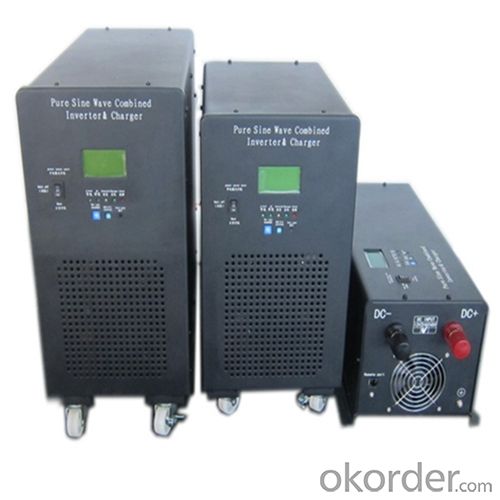
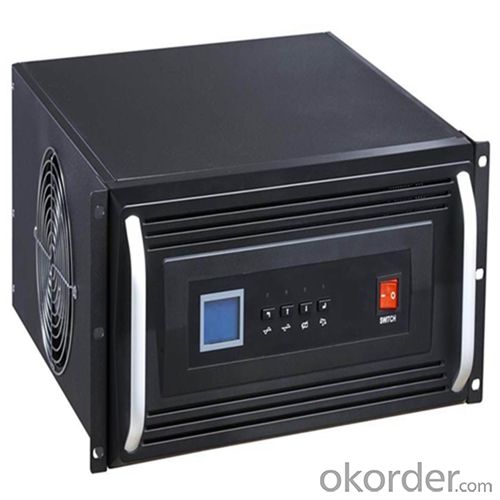
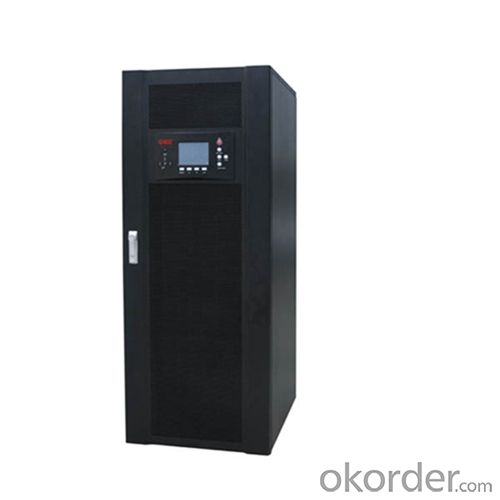
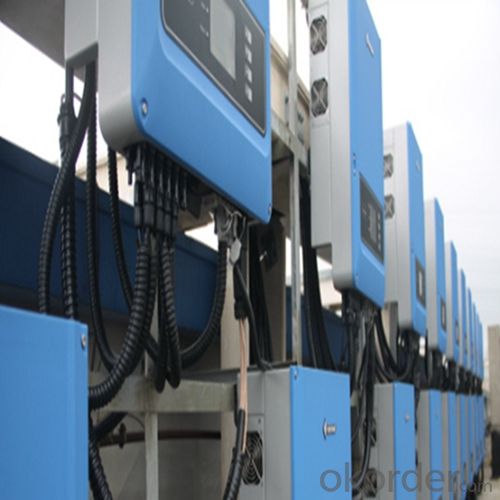
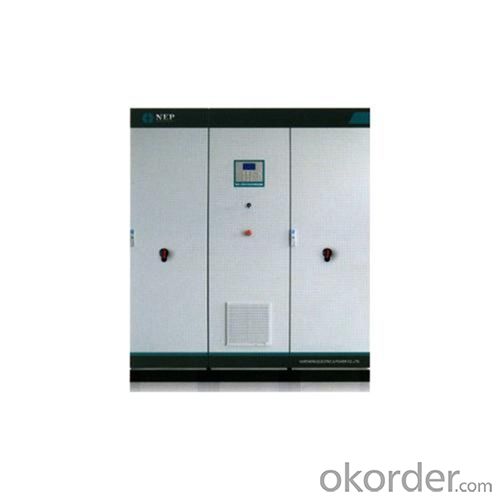
Specifications
Input | |
Input Voltage Range | 182-265VAC |
Output | |
Input Voltage Range | Batt.Mode:50±0.3Hz Mode:48-54Hz(50Hz) or 58-64Hz,Same as AC |
Output Wave Form | Sine Wave (Batt,mode) |
Transfer Time | 10ms(Typical) |
FAQ:
Q: Do you have the CE, TUV, UL Certification?
A: We’ve already passed all the tests, and any certificate is available.
Q: Have you ever sold your products to companies in my country?
A: Of course, we have customers in all general PV markets, but I think we should expand our market share along with the market growth.
Q: When did your company set up? You are a new company, how can I believe your quality?
A: We entered into Solar PV industry in 2005, now we have several plants in manufacturing of a-Si and c-Si panels, and our capacity is 220MW per year. Till now we have already passed all the tests by authorized laboratories, e.g. TUV, CE, UL.
Q: Can you help us install the module if we cooperate with you?
A: We haven’t entered into installation sector, but we have the plan in near future.
Q: How do you pack your products?
A: We have rich experience on how to pack the panels to make sure the safety on shipment when it arrives at the destination.
Q: Can you do OEM for us?
A: Yes, we can.
Q: Can we visit your factory?
A: Surely, I will arrange the trip basing on your business schedule.
- Q: How does a solar inverter affect the overall system cost?
- A solar inverter can increase the overall system cost as it is a crucial component responsible for converting the DC electricity generated by solar panels into AC electricity for use in homes and businesses. The efficiency, capacity, and quality of the inverter can influence the system's performance and reliability. Higher-quality inverters with advanced features tend to be more expensive, but they can maximize energy production and improve system durability, potentially offsetting the initial cost through increased energy savings over time.
- Q: Can a solar inverter be used in systems with different module capacities?
- Yes, a solar inverter can be used in systems with different module capacities. Solar inverters are designed to convert the DC power generated by solar panels into AC power that can be used in homes or businesses. They are typically designed to handle a range of module capacities and can be adjusted or configured to accommodate different system sizes. However, it is important to ensure that the inverter's capacity is compatible with the total capacity of the solar panels in the system to ensure optimal performance.
- Q: What are the indicators of a faulty solar inverter?
- Some indicators of a faulty solar inverter include, but are not limited to, a sudden drop in power output, unusual noises or vibrations coming from the inverter, error messages or warning lights displayed on the inverter's screen, frequent shutdowns or restarts, and a lack of communication or connection with the solar monitoring system.
- Q: After the PV inverter, how to achieve the same period before the network?
- It can automatically detect the generator and the grid frequency and voltage, in the frequency, voltage, phase are in line with the requirements of the grid to set the time before the release of the closing signal, so that it can be safely and securely connected.
- Q: What are the communication protocols used in solar inverters?
- There are several communication protocols commonly used in solar inverters to facilitate communication between the inverter and other devices or systems. Some of the most commonly used communication protocols in solar inverters include: 1. Modbus: Modbus is a widely used communication protocol for industrial devices, including solar inverters. It is a serial communication protocol that allows for the transmission of data between the inverter and other devices, such as monitoring systems or data loggers. Modbus is known for its simplicity and flexibility, making it a popular choice in the solar industry. 2. SunSpec: SunSpec is a communication protocol specifically designed for the solar industry. It provides a standardized way for solar inverters to communicate with other devices, such as smart meters or monitoring systems. SunSpec supports both wired and wireless communication, allowing for easy integration of solar inverters into larger energy management systems. 3. CAN bus: CAN (Controller Area Network) bus is a widely used communication protocol in various industries, including automotive and industrial applications. It is a robust and reliable protocol that allows for high-speed communication between devices. Some solar inverters utilize CAN bus to communicate with other devices or systems, providing a reliable means of data transfer. 4. Ethernet: Ethernet is a widely used communication protocol in the IT industry, and it is also utilized in some solar inverters. By using Ethernet, solar inverters can communicate with other devices or systems over a local area network (LAN) or the internet. Ethernet offers high-speed communication and can support various communication standards, making it a versatile option for solar inverters. It's important to note that different solar inverter manufacturers may use different communication protocols or a combination of them. The choice of communication protocol depends on factors such as the specific requirements of the system, the compatibility with other devices or systems, and the level of integration desired.
- Q: The working principle of photovoltaic grid - connected inverter
- In the small-capacity inverter generally push-pull inverter circuit, full-bridge inverter circuit and high-frequency step-up inverter circuit three, push-pull circuit, the step-up transformer neutral plug connected to the positive power supply, two power Alternating current, the output to get AC power, due to the power transistor to ground, drive and control circuit is simple, and because the transformer has a certain leakage inductance, can limit the short circuit current, thus improving the reliability of the circuit. The disadvantage is the low utilization of the transformer, driving the emotional load is poor.
- Q: Can a solar inverter provide power during a blackout?
- No, a solar inverter cannot provide power during a blackout. This is because solar inverters are designed to convert the direct current (DC) electricity generated by solar panels into alternating current (AC) electricity for use in homes or businesses. However, during a blackout, the solar panels cannot generate electricity since the grid connection is lost, and therefore the solar inverter cannot provide power.
- Q: Can a solar inverter be used with a solar-powered refrigerator?
- Yes, a solar inverter can be used with a solar-powered refrigerator. The solar inverter is responsible for converting the direct current (DC) generated by the solar panels into alternating current (AC) that can be used to power appliances like a refrigerator.
- Q: How does a solar inverter handle electromagnetic interference (EMI)?
- A solar inverter handles electromagnetic interference (EMI) by implementing various measures to mitigate and minimize its impact. These measures include using proper shielding techniques, filtering the input and output signals, and complying with relevant EMI standards and regulations. Additionally, advanced digital signal processing techniques may be employed to suppress any EMI-induced noise and ensure the efficient conversion of solar energy into usable electricity.
- Q: Can a solar inverter be used in a solar water pumping system?
- Yes, a solar inverter can be used in a solar water pumping system. The solar inverter is responsible for converting the direct current (DC) power generated by the solar panels into alternating current (AC) power, which is suitable for powering the water pump. This allows the solar water pumping system to operate efficiently and effectively, utilizing the solar energy to pump water without the need for grid electricity.
Send your message to us
Solar Inverter Brisbane - Approved MPPT Solar Charger 3000W 24V
- Loading Port:
- Shanghai
- Payment Terms:
- TT OR LC
- Min Order Qty:
- 5 pc
- Supply Capability:
- 3000 pc/month
OKorder Service Pledge
OKorder Financial Service
Similar products
Hot products
Hot Searches
Related keywords
